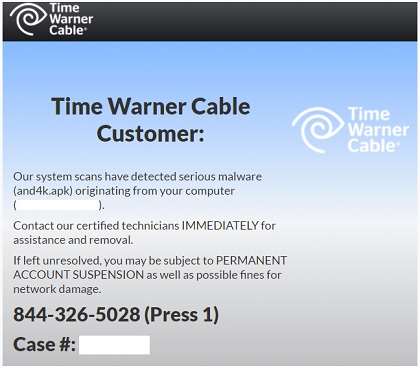New Tech Scam Impersonates Victims ISP
Posted by: Timothy Weaver on 06/23/2016 10:17 AM
[
 Comments
]
Comments
]
Tech scammers are trying a new trick to steal your info. Instead of cold calls, they are sending fake pop-up messages that are looking like messages sent from your ISP.

Some of the newer messages go a step further and say: “If left unresolved, you may be subject to PERMANENT ACCOUNT SUSPENSION as well as possible fines for network damage.”
Of course there is a phone number to call and if the user is tricked into calling, the scammers will try to talk the victim into allowing the scammers access to their system. Once the scammers have access, they will steal the victims’ sensitive information (passwords, bank account info, etc.).
The scammers are getting their victims by ad networks. If they click on a malicious ad, they are redirected to a website that checks the computer’s IP address. With that info, the scammers can figure out what ISP is being used. They can then custom the warning message to the correct fake ISP.
Source: Help Net Security

Some of the newer messages go a step further and say: “If left unresolved, you may be subject to PERMANENT ACCOUNT SUSPENSION as well as possible fines for network damage.”
Of course there is a phone number to call and if the user is tricked into calling, the scammers will try to talk the victim into allowing the scammers access to their system. Once the scammers have access, they will steal the victims’ sensitive information (passwords, bank account info, etc.).
The scammers are getting their victims by ad networks. If they click on a malicious ad, they are redirected to a website that checks the computer’s IP address. With that info, the scammers can figure out what ISP is being used. They can then custom the warning message to the correct fake ISP.
Source: Help Net Security
Comments





